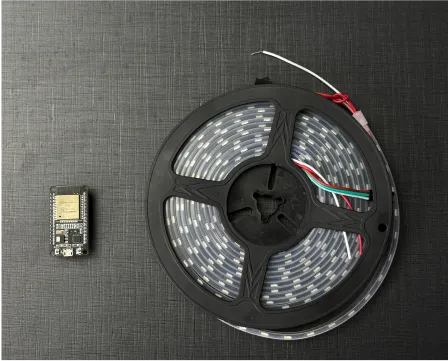
Control RGB using your imagination and EzloPi!
Water level detection using P45 float switch
The EzloPi smart devices provide automation through simple, customizable use with our open-source EzloPi platform, making daily life easier and improving human-machine interactions.
Before moving into this example, it is very important to know about the device registration, provisioning and converting the ESP32 device into an EzloPi device along with knowledge of config.ezlopi.com Web Flasher, MiOS Mobile Application for Android/iOS and the MiOS Web Application.
1. About this example
This project aims to interface a P45 float switch with the EzloPi device for efficient water level detection. The P45 float switch is a simple yet effective liquid level sensor, which is integrated with the EzloPi device to enable real-time monitoring of water levels in various applications for users. This smart monitoring is done by utilizing the MiOS smart platform for allowing the users to monitor and notify them about various water level conditions.
The float switch, when interfaced with the EzloPi device, can have many applications for smart automation purposes such as it can accurately detect water levels in tanks for management of water resources. It can also monitor water levels for triggering the operation of motors such as pumps or valves, for optimal water usage and preventing overflow or shortages. And, in industrial applications, the float switch can be used to monitor liquid levels in tanks or reservoirs, facilitating process automation and ensuring efficient utilization of resources.
2. Project Video Demonstration
Welcome to the project demonstration video section. The following video showcases the key aspects of Water level detection using P45 float switch, providing a visual walkthrough of its implementation.
3. Circuit Setup & Interfacing
The following components are required for interfacing with the EzloPi device:
- ESP32 as an EzloPi smart device.
- P45 float switch.
The wiring diagram of ESP32 30 pin is represented as follows:
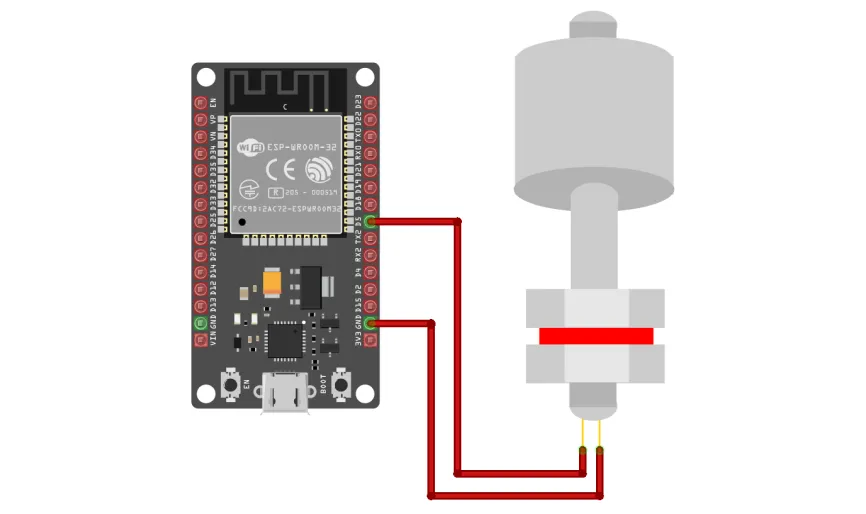
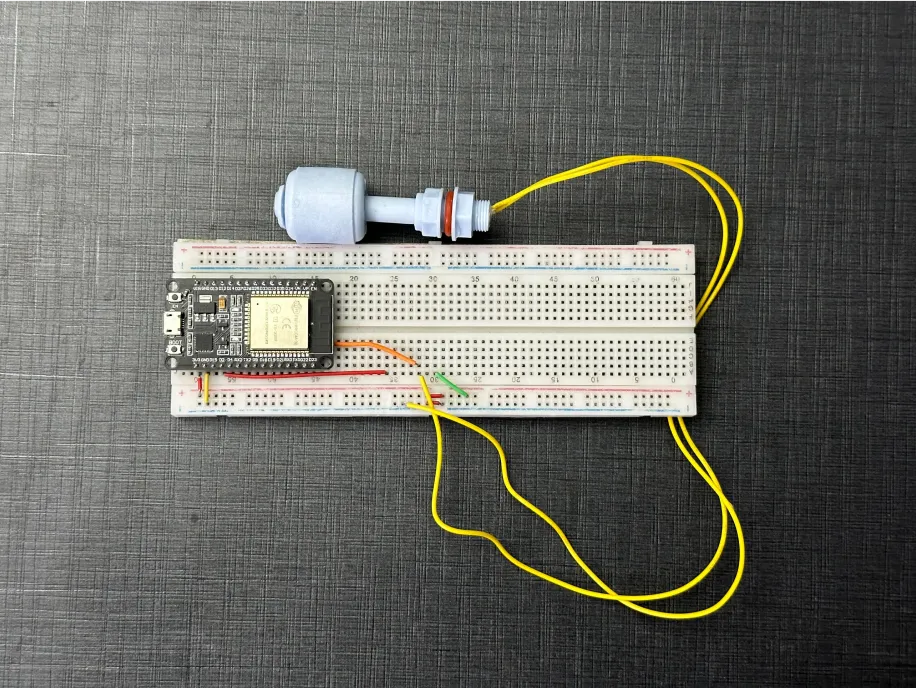
The following connections are made in order to complete the circuit setup:
From ESP32 to the Float Switch:
| ESP32 | Float Switch |
| GND | 1st terminal |
| D5 | 2nd terminal |
4. Interfacing the float switch with the EzloPi Web Flasher
1. Set up your device/hardware by visiting config.ezlopi.com
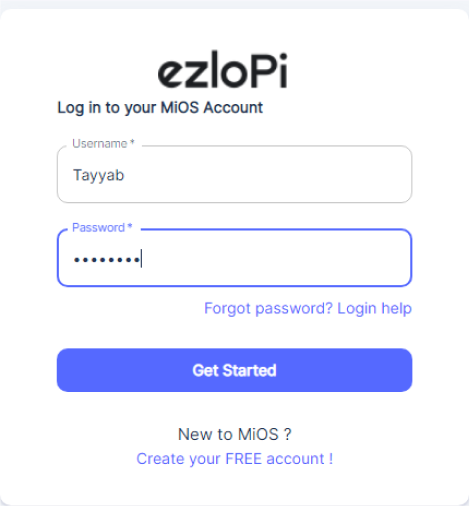
- Log in using the credentials which you just set earlier while signing up.
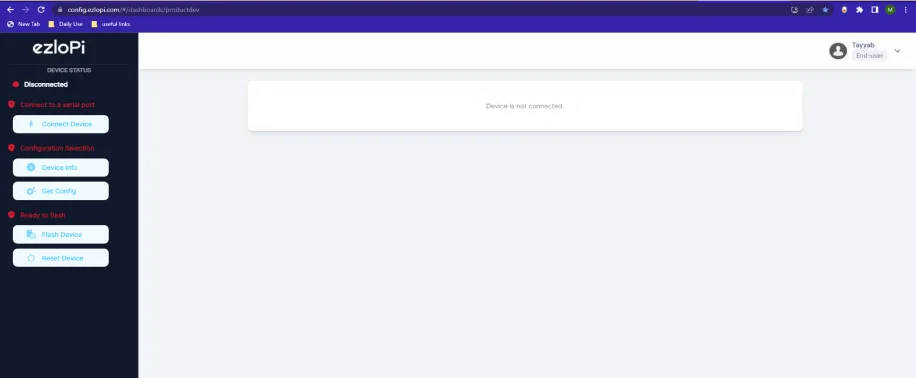
- Now, click on the Connect Device button and a pop-up window will appear.
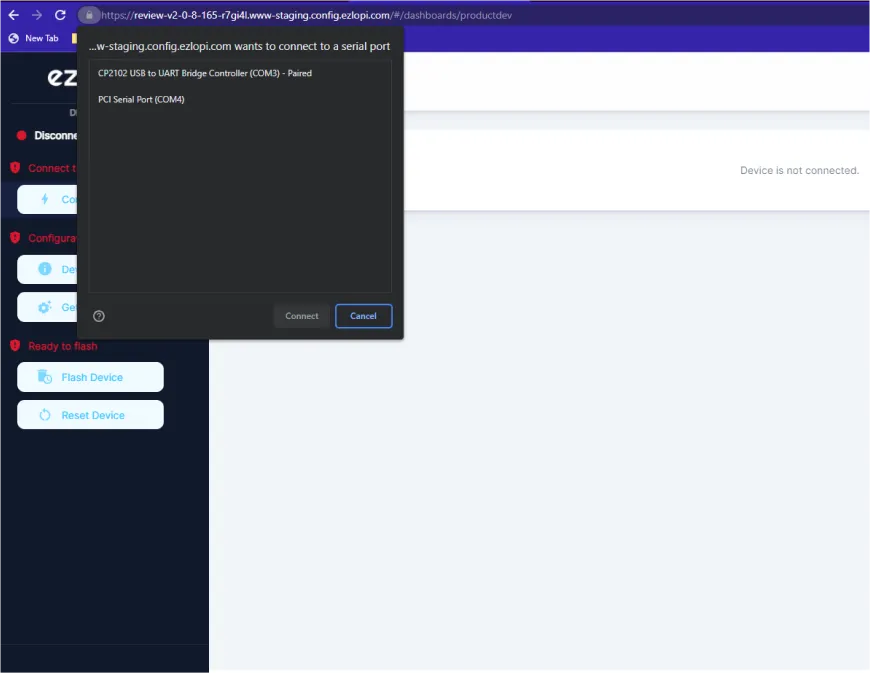
- Now, select COM Port to which your ESP32 device is connected. In our case, the COM3 port is used.
Click Connect
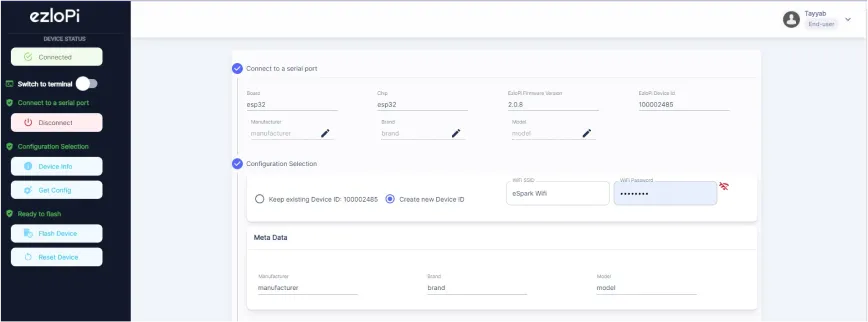
- If you are new to this and it's your first time configuring, select Create new Device ID. Click on the Configure Wifi button. Enter Wifi SSID and Wifi Password.
- In the Device Configuration, tab click on Digital Input.
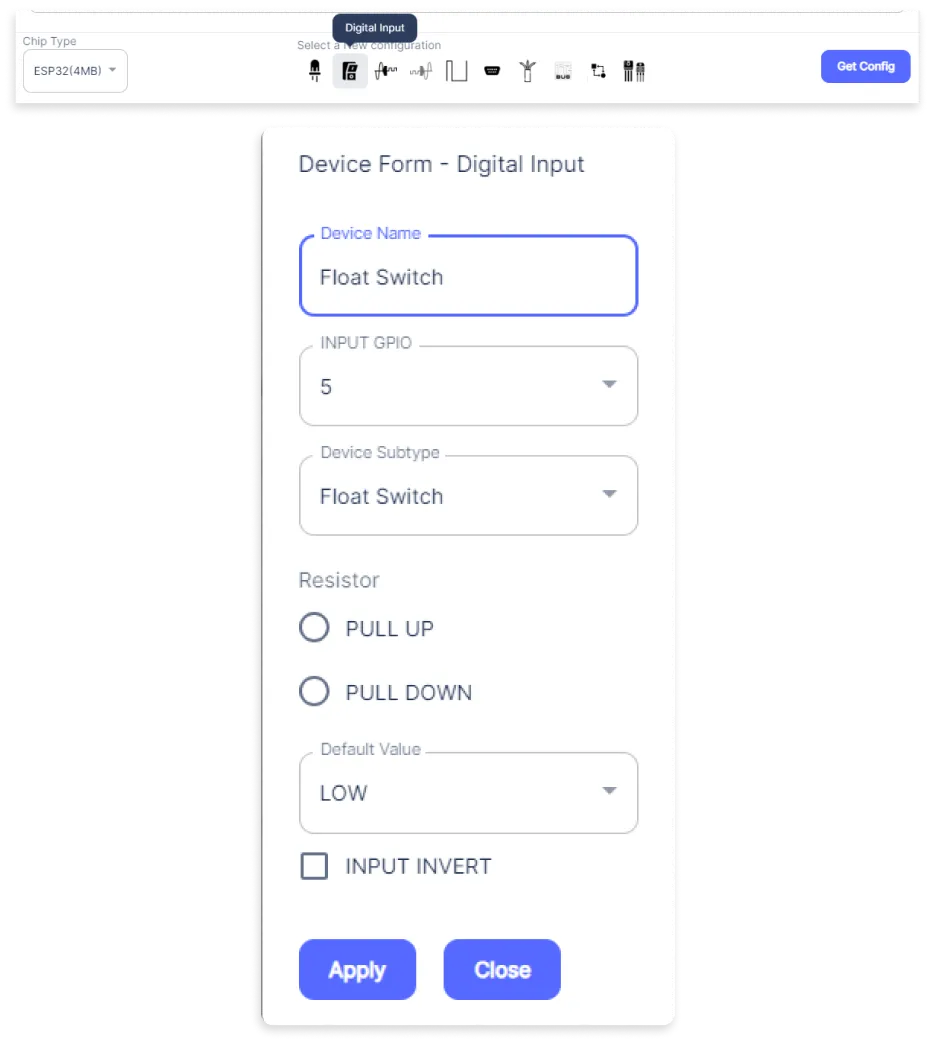
- A Digital Input window will open for inputting the following parameters:
- Set a device name of your choosing. In our case we set it to Float Switch.
- Set the Input GPIO to 5.
- Set Device Subtype to Float Switch.
- Set Default Value to LOW.
- Now Click the Apply button.
- After clicking the apply button you can see a table of your setting in the device configuration tab.
- Press the Flash Device button.
- A window will appear on the bottom right side of the screen displaying “Please press BOOT button while flashing begins.”
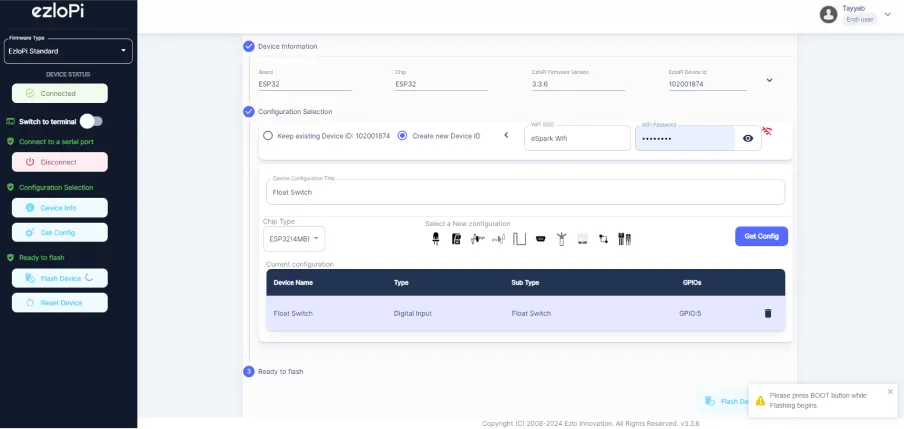
- Hold the BOOT button down until the next window appears on the bottom right side of the screen which says “Installation prepared. Please release the boot button now.”
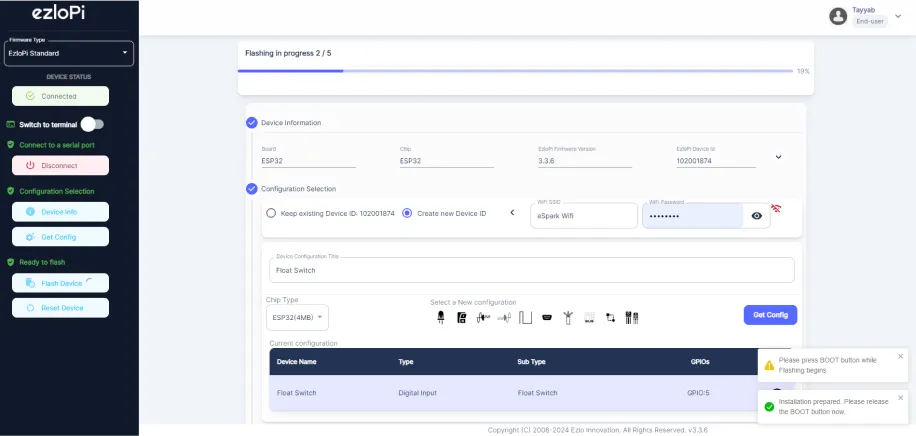
- Release the BOOT button from your ESP32 when this pop-up on the bottom right window appears.
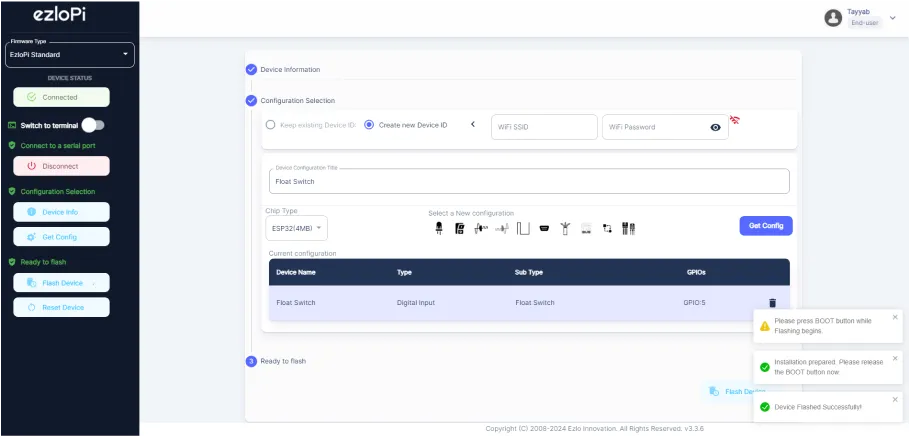
- After some time, a popup will appear saying Device Flashed Successfully! This means that your device has been set up successfully.
5. MiOS App
You can download the MIOS Android app from the Google Play Store and Apple App Store.
- After downloading the app, proceed to install the application and open it.
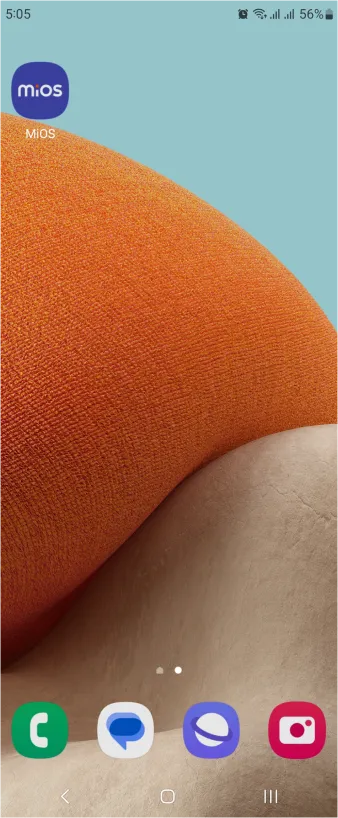
- Using the MIOS mobile application, create a new Ezlo Cloud account using the sign-up option. If you already have an account, you may proceed to log in.
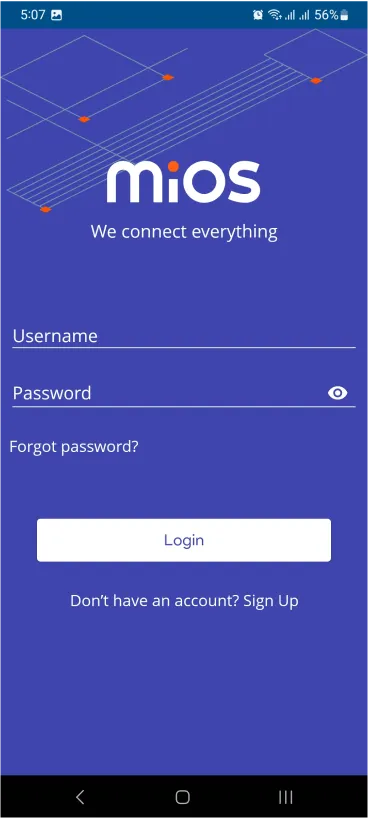
- After successfully logging in, you will be able to see the number of controllers connected such as a lamp, fan, or any other device in the MiOS app. Tap on any controller of your desired ID:
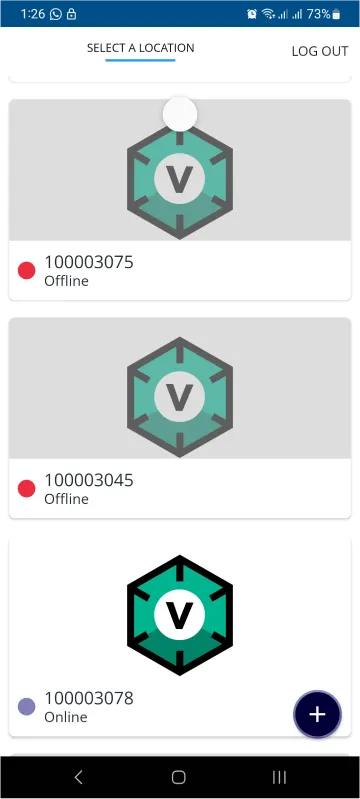
- You will be able to see the status of your controller whether it is online or offline. Access the device dashboard, and tap the device. The following view of the dashboard will appear:
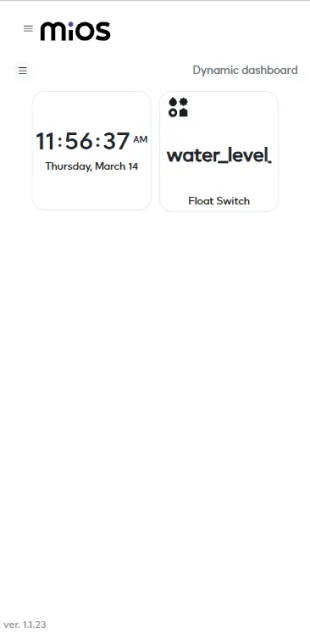
- After opening the MiOS mobile dashboard, you will be able to see the tile of your connected device.
- As you can see in the MiOS mobile dashboard, we can see the float switch tile. When the water level is below the threshold which is set for the float switch, the tile will display “water level ok” message and when the water level increases and rises above the specific threshold, the tile will display “water level above high threshold” message.
5. MiOS Web Dashboard
- After configuring the controller with the EzloPi web flasher, head to https://ezlogic.mios.com/
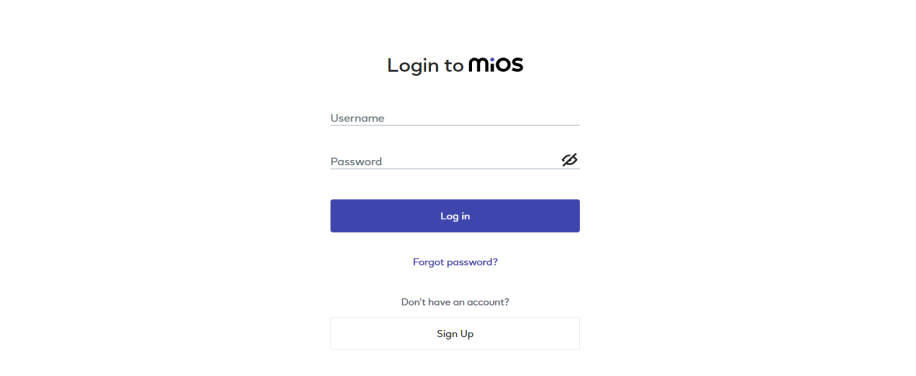
- Use the same credential to log in that you used for configuring the controller with the web flasher.
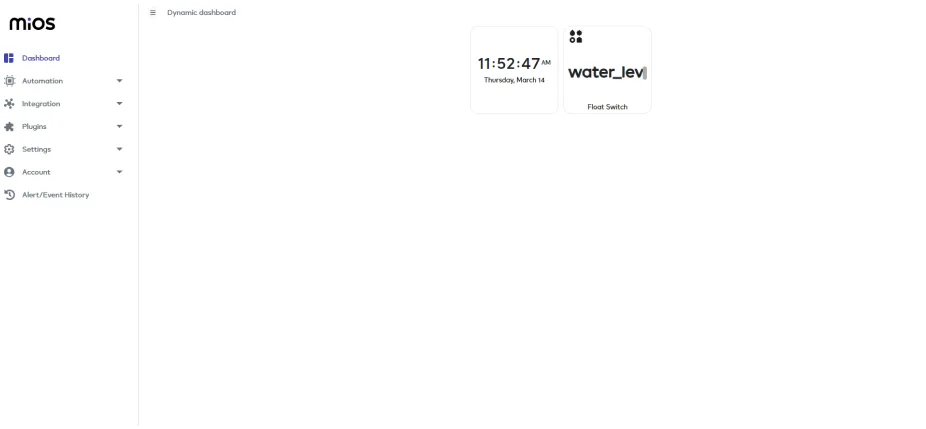
- Now, on the MiOS web dashboard, you will be able to see the tile for the float switch.
- When the water level is below the threshold which is set for the float switch, the tile will display “water level ok” message and when the water level increases and rises above the specific threshold, the tile will display “water level above high threshold” message.

eZlopie Products A single-channel 5V relay module $00.00

eZlopie Products Momentary switch $00.00

eZlopie Products Level Shifter Module (BSS138) $00.00

eZlopie Products ESP32
$00.00

eZlopie Products AC Lamp and Holder
$00.00












